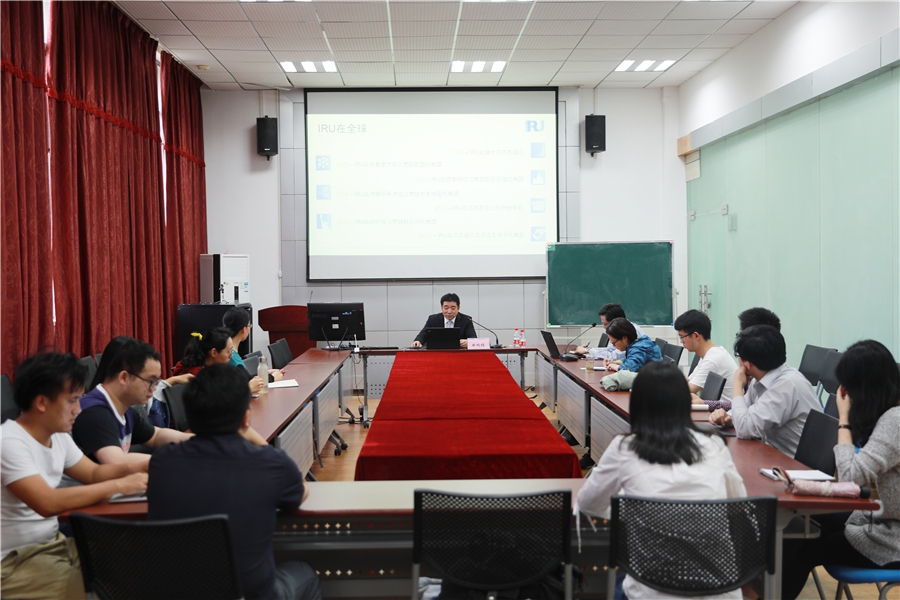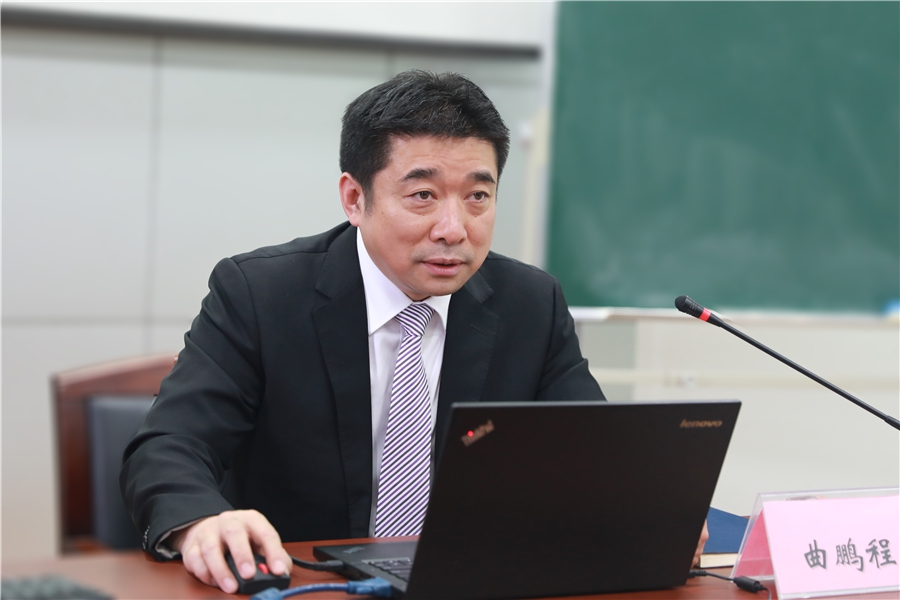On May 22nd, Mr. Qu Pengcheng, the chief representative of East Asia and Southeast Asia Representative Office of the International Road Transport Union (IRU), visited our institute and gave a lecture on “The potential of developing international road transport and the United Nations International Customs Transit System of TIR in the Belt and Road”. The seminar was presided by associate professor Xiong Ling of our institute. Faculties and students from CIBOS, School of International Education, and Institute for International Studies attended this activity.

The International Road Transport Union is authorized by United Nations to govern the TIR systems globally. “Based on the Convention on International Transport of Goods Under Cover of TIR Carnets (TIR Convention), TIR is an international goods’ customs transit system, which has a history of 69 years. It aims to promote the level of global trade’s facilitation and enhance the safety of international road transport by simplifying customs clearance procedures and improving customs clearance efficiency.” Mr. Qu introduced that IRU, as international organization in the field of road transport, involved more than 100 State members and its work spanned among these countries. China joined the TIR Convention in July 2016 and became the 70th State party. On May 18, 2018, TIR was officially implemented in China, and China became the 61st operating country of the system in the world.

(Mr. Qu Pengcheng)
“The implementation of the TIR system requires only a small amount of manpower and facilities. When the goods are cleared, the customs only need to check the TIR certificate information and the customs seal of the carrier unit. It is not necessary to carry out the unpacking inspection of the carrier unit, thereby reducing the waiting time of the goods at the port and reducing the transportation cost.” Mr. Qu stated that the implementation of the TIR system would effectively facilitate the customs clearance between China and countries along the “Belt and Road”, and promote cooperation between China and these countries in the field of international road transport, thereby further releasing the potential of China's international road transport and helping the construction of the “Belt and Road”.
In addition, Mr. Qu proposed policy recommendations for using TIR International Customs Transit System to promote the “Belt and Road” construction, including updating existing international road transport agreements; connecting with other countries in Eurasia on the rules and standards; seizing China's advantage in the field of big data of logistics industry and artificial intelligence to become the maker of several Eurasia standards of international road transport; opening more TIR ports to extend its facilitation effect to a wider area.
(Rewritten by Wan Xiaowei)
(Edited by Fu Shanshan)
